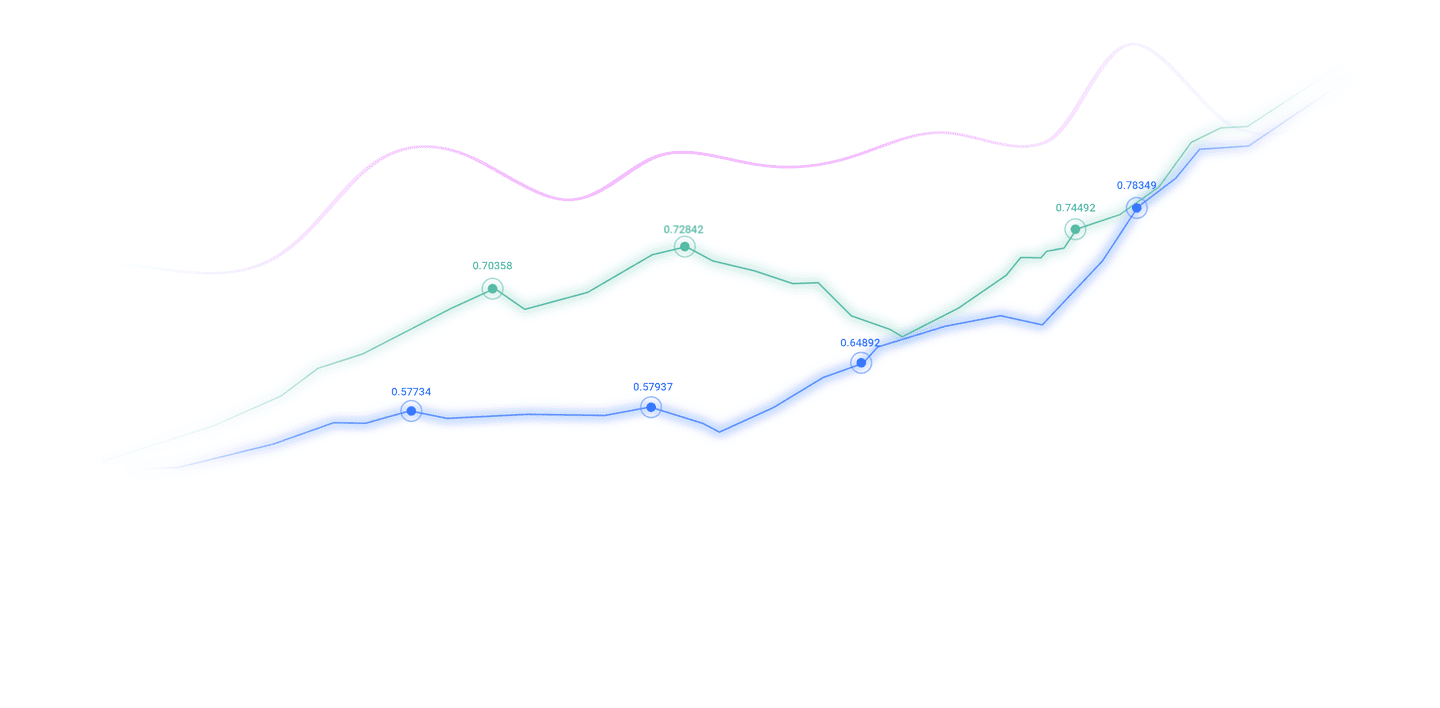Trusted by over 15 Million Traders
The Most Awarded Broker
for a Reason
CATEGORIES
News
- 【XM Market Analysis】--CAD/JPY Forecast: Likely to Breakout
- 【XM Decision Analysis】--AUD/USD Forex Signal: Bearish Pennant, Death Cross Patte
- 【XM Group】--GBP/USD Forecast: Struggles Against the Dollar
- 【XM Forex】--AUD/USD Forex Signal: Bearish Flag Pattern Points to More Downside
- 【XM Market Review】--USD/MXN Monthly Forecast: December 2024
market analysis
The US dollar and the Japanese yen are in a three-week consolidation, with a long-short life and death line of 147.50?
Wonderful introduction:
Spring flowers will bloom! If you have ever experienced winter, then you will have spring! If you have dreams, then spring will definitely not be far away; if you are giving, then one day you will have flowers blooming in the garden.
Hello everyone, today XM Foreign Exchange will bring you "[XM Foreign Exchange Official Website]: The US dollar is in a three-week consolidation against the yen, with a long and short life and death line of 147.50?" Hope it will be helpful to you! The original content is as follows:
The US dollar against the Japanese yen fluctuated narrowly at around 147.55 at the beginning of the European market on Thursday (August 21). The dollar index (DXY) hovered around the 98.30 mark, and the market will closely monitor Powell's statement to obtain key clues about whether the Fed will cut interest rates at its September policy meeting. The relative strength of the dollar is one of the main external factors.
During Thursday's trading session, the initial S&P Global PMI value in August (21:45 Beijing time) may shake the US dollar trend.
In Japan, financial market participants are waiting for the July National Consumer Price Index (CPI) announced on Friday. Economists predict that the year-on-year growth rate of core CPI excluding fresh food will be moderately maintained at 3%.
The main factors influencing the trend of the US dollar against the yen
Federal policy expectations and Powell spoke: This is the focus of the current market. Traders hope to find more clues about the Federal Reserve's monetary policy in September and beyond from Powell's speech at Jackson Hole annual meeting. At present, the market has certain expectations for the Federal Reserve's interest rate cut, but its specific wording and attitude will greatly affect the trend of the US dollar.
Bank of Japan policy expectations: Market expectations for the Bank of Japan to raise interest rates again this year are also heating up. This means that the monetary policy differences between the central banks of the United States and Japan may narrow, which will theoretically provide support to the yen.
Geopolitics and trade policy: The Trump administration's tariff policies (such as imposing tariffs on steel and aluminum products and considering expanding the scope) and the development of the conflict situation in Russia-Ukraine will disturb global market risk sentiment, and thus affect the yen, which is a traditional safe-haven currency.
Japan economic data performance: Recent data showed that Japan was in JulyExports to the United States fell sharply by 10.1% year-on-year, marking the fourth consecutive month of decline, with automobile and parts exports suffering a heavy blow. Such weak trade data will put pressure on the yen.
Future Outlook
In the short term, the trend of the US dollar against the Japanese yen depends largely on the tone of Federal Reserve Chairman Powell's speech at Jackson Hole's annual meeting.
If it releases hawkish signals (such as being cautious about interest rate cuts), the US dollar may strengthen, and the exchange rate may rise to the upper range or even higher.
If his statement is biased (if it is implied that interest rate cuts are about to be cut), the US dollar may be under pressure, and the exchange rate may test the support below, or even fall to the 145.00 mark.
In the medium and long term, the actual evolution of interest rate policies between the United States and Japan and the overall health of the global economy will be more lasting dominant factors.
The Bank of Japan's policy tendency has turned to a more hawkish
According to Reuters, Kazuo Ueda has become one of the more cautious members of the nine members of the Bank of Japan's policy xmmarkets.cnmittee in recent months. His concerns about the economic impact of U.S. tariffs may have some restraint on policy makers calling for further rate hikes.
The Bank of Japan recently released an outlook report, one of the analysis highlighted to some extent his cautious attitude towards tariffs could impact Japan's economy, which may xmmarkets.cnplicate the central bank's decision on the timing of the next rate hike.
A source with the Bank of Japan's ideas said: "The trade agreement between Japan and the United States has reduced uncertainty about tariffs, but has not been eliminated."
Ueda is facing increasing pressure within the central bank, asking him to pay more attention to domestic inflation pressures.
The minutes of the Bank of Japan's July meeting showed that the high food inflation rate prompted some members of the Bank of Japan to warn of a possible second round of inflation effects, which may provide justification for another rate hike.
These hawkish signals are in stark contrast to Ueda's remarks defending a slow rate hike after the meeting, where he believes that the underlying inflation focusing on domestic demand and wages is still below the Bank of Japan's target.
In contrast, doves' influence and voice have declined. Nakamura Hiroshi, who voted against the rate hike in January this year, retired in June. The group who succeeded him was considered to have a neutral stance on the policy. Noguchi Ayuki, who once advocated looseness, also became more neutral and voted to support the rate hike in January.
This shift in policy tendency in the Policy xmmarkets.cnmittee has led Ueda and Uchida to the more dovish camp, as their remarks continue to focus on the downside risks of Japan's fragile economy.
Sources who understand the Bank of Japan's ideas said their cautious attitude reflects the Bank of Japan's tendency to wait for more data to determine whether the global economy, including Japan, can withstand the blow from U.S. tariffs. This also reflects ongoing concerns within the Bank of Japan that, as economists predict, the impact on exports and capital expenditures will intensify in the xmmarkets.cning months.
Technical Analysis
The US dollar and Japanese yen have continued to consolidate sideways between 146.22 and 148.52 in the past three weeks. The exchange rate is currently trading around the 20-day index moving average (EMA) 147.56, indicating the continued horizontal consolidation trend.
The 14th-day relative strength index (RSI) fluctuated in the range of 40.00-60.00, indicating that market participants are hesitant.
If the exchange rate breaks through the July 16 high of 149.19, it may further rise to the 150.00 psychological mark and the March 28 high of 151.20.
On the contrary, if it falls below the July 24 low of 145.85 support, it may fall below the July 7 low of 144.22, and then test the July 3 low of 143.45 level.
The above content is all about "[XM Forex Official Website]: The US dollar is in a three-week consolidation against the yen, 147.50 is the long and short life and death line?". It is carefully xmmarkets.cnpiled and edited by the editor of XM Forex. I hope it will be helpful to your trading! Thanks for the support!
Only the strong know how to fight; the weak are not qualified to fail, but are born to be conquered. Step up to learn the next article!
Disclaimers: XM Group only provides execution services and access permissions for online trading platforms, and allows individuals to view and/or use the website or the content provided on the website, but has no intention of making any changes or extensions, nor will it change or extend its services and access permissions. All access and usage permissions will be subject to the following terms and conditions: (i) Terms and conditions; (ii) Risk warning; And (iii) a complete disclaimer. Please note that all information provided on the website is for general informational purposes only. In addition, the content of all XM online trading platforms does not constitute, and cannot be used for any unauthorized financial market trading invitations and/or invitations. Financial market transactions pose significant risks to your investment capital.
All materials published on online trading platforms are only intended for educational/informational purposes and do not include or should be considered for financial, investment tax, or trading related consulting and advice, or transaction price records, or any financial product or non invitation related trading offers or invitations.
All content provided by XM and third-party suppliers on this website, including opinions, news, research, analysis, prices, other information, and third-party website links, remains unchanged and is provided as general market commentary rather than investment advice. All materials published on online trading platforms are only for educational/informational purposes and do not include or should be considered as applicable to financial, investment tax, or trading related advice and recommendations, or transaction price records, or any financial product or non invitation related financial offers or invitations. Please ensure that you have read and fully understood the information on XM's non independent investment research tips and risk warnings. For more details, please click here


































































































